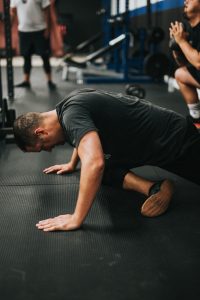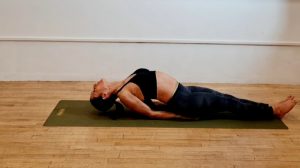
Developing flexibility involves two main components:
Toning down 'guarding'
Strengthening opposing muscles
Both of these address why the tightness is there in the first place – and the vicous cirlce that has been created.
Toning down guarding
For injury-free gains in flexibility you want to avoid bouncing and dynamic stretching which tricks the body’s defense system. Instead you need to persuade the defense system to back off. You do this by noticing the guarding – how you react to the sensation of tightness. It is usual to immediately judge the tightness rather than use it as an opportunity to fully inhabit your experience.
Get into your body
Recognise that what you have here is muscle and attachments to bone. Almost visualise this – with appreciation (because it is pretty amazing). Trust the fact that it does have the capacity to lengthen when you give it the right signals: no judgement, no force; just a lowering of defenses – a willingness to be with the uncomfortable sensation. This is essentially meditation and there is a little more info for you here
Strengthen opposing muscles
Dominant muscles or muscles held in constant tension become short and tight. For example the tight chest and front shoulders of a typical slumped posture. Here the upper back muscles become weak and long (upper cross syndrome). Stretching the chest and front shoulders by contracting the opposing muscles as in fish pose (below) will feel near impossible.

combining these two components
Taking the example of upper cross syndrome, a programme of change would involve:
- dedicating more training time to the upper back (middle/lower traps and rhomboids) and rear shoulders
- reducing time spent on likely favourites such as the chest press, push ups and planks
- stretching the chest and shoulders with support (using walls, door frames and straps)
Once a point has been reached where the contraction of the upper back muscles can oppose the tightness of the chest and front shoulders, former training can be resumed – without ignoring the importance of the upper back.
